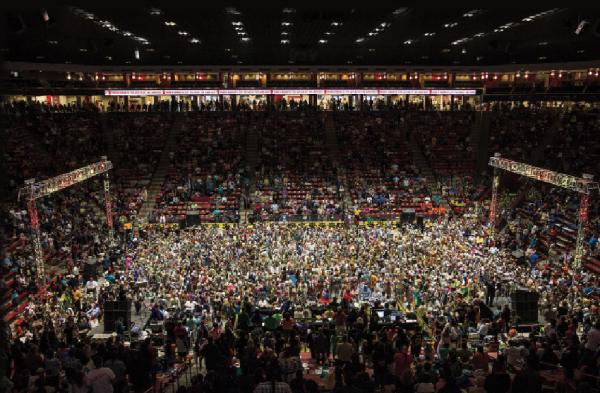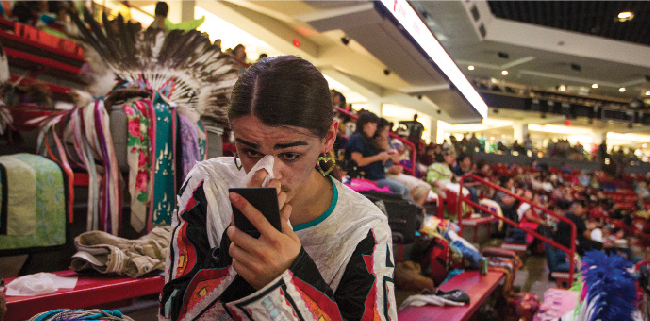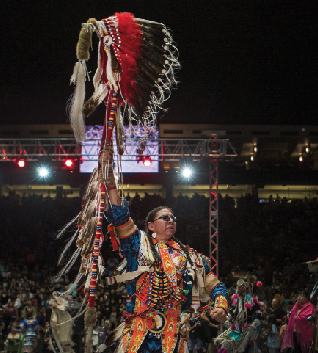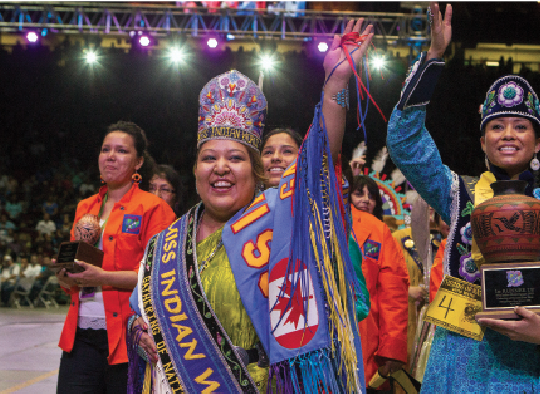There's No Bigger Celebration Than the Gathering of Nations

The floor of The Pit starts to fill as dancers pour in during grand entry on Saturday night. Originally held at the then–University of Albuquerque in 1983, the Gathering of Nations moved to its current location in 1986.
Text and Photographs by Diego James Robles
As I walked toward the University of New Mexico Arena, otherwise known as The Pit, a faint and distant drumming could be heard, getting louder and more distinct with every step I took. As I weaved through the long rows of cars in the parking lot, I saw to my left and right, in every aisle, young men, old women and children, some barely old enough to walk, putting on something pow wow–related that used to belong to a wild animal. As I got close to the arena, I was shocked to see that the line to buy tickets stretched more than 100 yards and was being monitored by men in yellow event windbreakers who were constantly saying something into walkie-talkies about a three-hour wait to get inside. Welcome to the Gathering of Nations, the world’s largest Native American pow wow, now in its 30th year.
The annual three-day celebration in Albuquerque this year ran from April 25 to 27 and featured more than 3,000 Native dancers and singers, along with hundreds of artisans, traders and vendors. Tens of thousands of people swarmed the city’s hotels and motels in order to watch world-class pow wow dancers and take in a bit of Native American culture.
The highlights of the long weekend included the coronation of the new Miss Indian World, a young Diné woman who was greeted with a deafening cheer from the thousands of her tribesmen in attendance, and the championship rounds of men’s fancy dancing. More than 700 tribes from throughout the U.S., Canada—and even a few from Latin America—were represented in some way, be it in regalia, informational booths or dancing in educational dance troupe. Thus, it was difficult to walk through the crowded arena and not at some point get a bunch of feathers in your face or accidentally step on a lost child, fully dressed in skins, beadwork and feathers.
Read more at http://indiancountrytodaymedianetwork.com/2013/06/05/theres-no-bigger-celebration-gathering-nations-149710
© 1998 - 2013 Indian Country Today. All Rights Reserved To subscribe or visit go to: http://www.indiancountry.com






